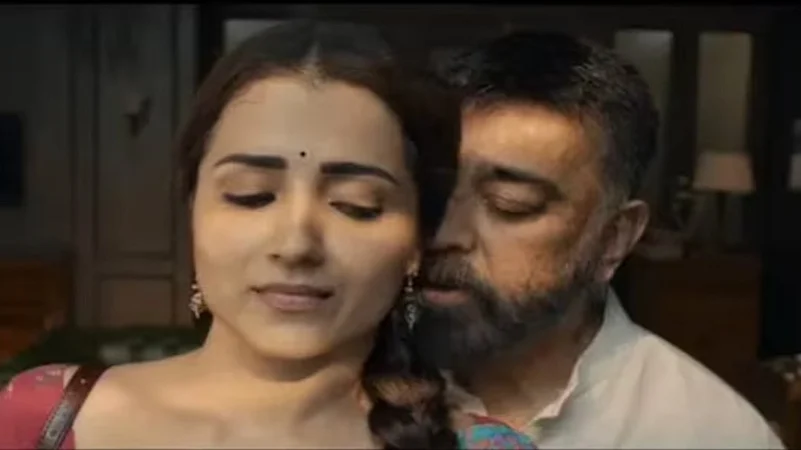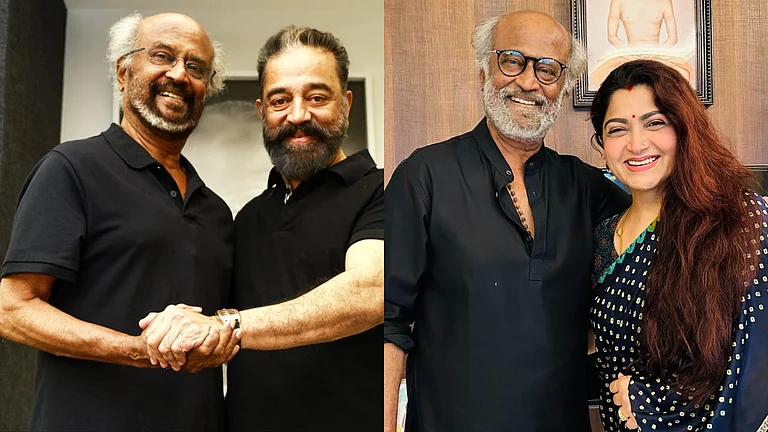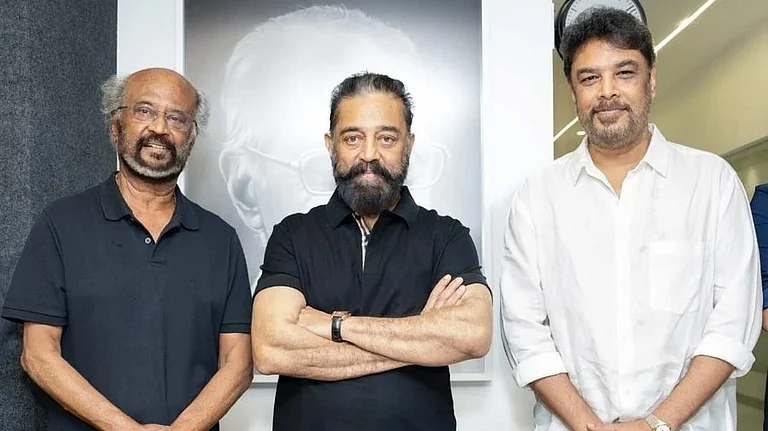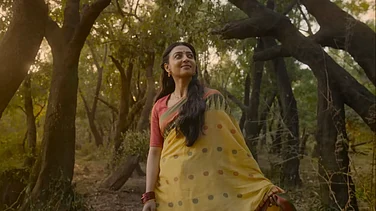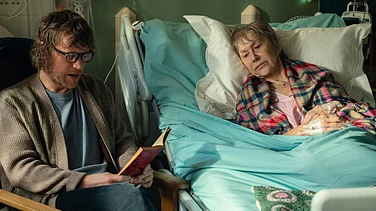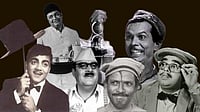The introductory scene between Kamal Haasan (71) and Trisha Krishnan (42) in Thug Life is set in prison, where he is serving a sentence and she is a visitor. He pretends not to remember her name (she is a bar dancer he “rescued” a few decades ago; later, his mistress), yet proceeds to devour her with his eyes while unknotting the string holding her backless blouse, blowing raspberries on her neck. She flutters, coyly, telling him her real name, to which he replies, "Madam, I am your only Adam." The scene, which was overplayed in the promos, creeped me out a bit.

It’s not Haasan's age or the age-gap that is problematic, and I am totally for romance at any age. In Jack Nicholson and Helen Hunt's As Good as it Gets (1997)—Hunt’s character is 33 years younger (which is acknowledged in the film) with a life, flaws and full emotional agency.
I loved Paul (Harrison Ford, 82) romancing Julie (Wendie Malick, 74) in Shrinking (2023)—it felt the opposite of creepy or exploitative because the power dynamics are balanced; the tone is that of self-awareness, shared history, banter and emotional openness.
An age-gap relationship beautifully explored was in Lost in Translation (2003, Bill Murray and Scarlet Johansson). It is evident that the relationship is led by emotional intimacy, not sexual tension. Murray’s character does not possess her, he sees her. Until the end, the relationship remains ambiguous, unconsummated.

But when these age-gap relationships are layered with overt sexuality, especially when the woman is significantly younger, it tips the balance further into troubling territory. The dynamic becomes more about desire, possession, and control—feeding into male fantasy at the expense of female agency. Hey Ram (2000),also featuring Kamal Haasan, has a similar imbalance—Haasan as the all-knowing, anguished man, and Rani Mukherji as the tender, sexualised young wife, whose brutal death is used to propel his character arc.
In Thug Life, Haasan and Krishnan’s scenes, laden with intimacy and sensual overtones, are rendered in Mani Ratnam’s trademark lyricism. This is a pattern in Ratnam's past work too—emotional and sexual chemistry between unequals, where the woman serves the man’s arc more than her own. In many scenes, like the one described above, the sensuality is also performative, and that makes the imbalance more glaring. When probed by NDTV, Mani Ratnam defended his casting choices, arguing that “Age-gap relationships exist in society, and cinema must reflect society.”

Taking this theory to another level was Dev Anand, who always managed to cast himself opposite much younger heroines (Waheeda Rahman, Sharmila Tagore, Zeenat Aman, Tina Munim, to name a few). In Swami Dada (1982), one of his last films, he raised the bar by pairing himself with Christine O’ Neil (19) and Padmini Kolhapure (17) (both four decades younger). They both orbit him at different points in the movie and while one is exoticised for her sexuality, the other is sanctified for her virginity. Dev Anand (Swami Dada) revels in his sainthood, his moral superiority, making the women mere props in his narrative, as though spiritually gaslighting them.
The problematic part is when this kind of age imbalance is not interrogated, which is usually the case. All we see is the woman adjusting to the man’s world, not the other way around. Even in a seemingly progressive movie like Cheeni Kum (2007), the older man (Amitabh Bachchan) is the philosophical anchor and the younger woman (Tabu) is charmingly naïve and emotionally accommodating. In the same year, Bachchan also starred in Nishabd (based on Lolita), in which a teenage girl (Jiah Khan), his daughter’s friend, becomes his object of desire. Director Ram Gopal Varma attempts psychological realism and fails; he ends up sensationalising the relationship, with Khan’s character being overly sexualised and fetishised with no real arc.

However, way back in 1975, K. Balachander’s Apoorva Raaganlal interrogated the discomfort with generational crisscrossing, and the moral and social confusion it creates, with great finesse. With both younger man-older woman and older man-younger woman narratives in parallel, this movie was way ahead of its time. Starring Kamal Haasan, Srividya, Jayasudha and Major Sundarrajan, the film has emotionally charged relationships without any performative sensuality. Neither pairing is glamorised or made into a joke; instead, they are presented as sincere, emotionally charged relationships that raise difficult questions.
Balachander remade the film in Hindi as Ek Nai Paheli (1984), with Kamal Haasan remaining a common character and the others played by Hema Malini, Raaj Kumar and Padmini Kolhapure. At the time, Raaj kumar was 58 years old, paired opposite Padmini Kolhapure, who was 19.
In the end, it’s not about what is shown, but how it’s shown—who is allowed to speak, choose, and leave. The question is: When does desire become domination?
At the recently released Sikandar’s trailer launch, Salman Khan responded to questions of his pairing with 32 years younger Rashmika Mandanna by saying, “If the heroine doesn't have a problem, or if the heroine's father doesn't have a problem, then why do you have a problem?", adding, "When she gets married and has a daughter, and if her daughter becomes a big star, then I will work with her too—with her mother's permission, of course."
The problem is not with geriatric testosterone, but with the lens that worships it—while muting the woman’s voice, gaze, and choice. When agency, emotional equality, and mutual desire are present, it becomes charming, even moving. When they're missing, it becomes voyeuristic or exploitative.
Until we learn to explore the ethics of intimacy, films like Thug Life will continue to blur the line between art and power play—often tipping into the latter, even with the best cinematography money can buy.







